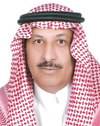Astronaut Sultan bin Salman: 30 years ago

It was June 17, 1985, when NASA’s space shuttle Discovery left for orbit about 380 kilometer above earth on mission STS-51G. It was a memorable day not only for the young Saudi prince, but for all the people in Saudi Arabia. It was an event that I could not afford to miss. I flew to the US on my own and I was there to watch the launch of the space shuttle from a faraway distance in Cape Canaveral. I still remember being told that our Saudi astronaut was on seat number 7 aboard the shuttle. Prince Sultan was among a crew that consisted of Commander Daniel C. Brandenstein, Pilot John O. Creighton, Mission Specialists Shannon W. Lucid, John M. Fabian, Steven R. Nagel and Payload Specialists Patrick Baudry. The backup crew consisted of Jean-Loup Chretien and a Saudi F-15 fighter pilot Abdulmohsen Al-Bassam.
The mission that took seven days had accomplished many tasks. Many satellites were put into orbit including the ARABSAT-1B (Arab Satellite Communications Organization). The satellite was launched as the shuttle was cruising at an altitude of about 380 kilometer above earth. The satellite was subsequently boosted to its operational orbit at about 38,000 kilometer above our planet Earth.
Many scientific experiments were conducted aboard the shuttle and Prince Sultan participated in many of them such as Earth observation and ionized gas and some other experiments that were requested by King Fahd University of Petroleum and Minerals. Those were experiments that dealt with the need to gain more knowledge about gas particles on solid surfaces. Discovery mission STS-51G was a success and it landed on June 24, 1985, at Edwards Air Force Base in California.
It is true that this mission was accomplished 30 years ago, but its effect and impact is still felt by many in Saudi Arabia. Many of the young Saudis don’t remember the event. They have only read about it, but many still remember the thrill of seeing an international and a multi-cultural mission that a Saudi national was part of. It made all Saudis very proud. The shuttle mission made many young Saudis think about the importance of science, knowledge and space. It inspired many to even choose their future carrier.
Saudis should find ways to encourage more young people to study space technology. There are thousands of young men and women attending top American schools and it is a great opportunity for them to study pace programs and curricula. As far as we know there are Saudi universities that have started some sort of programs that teach or promote education pertaining to space science and technology. Also, Prince Sultan is said to be promoting such programs. Space technology is making great strides. Recently, the world watched some major events related to space. This year we saw two astronauts leaving for the International Space Station to spend a year there. They are astronaut and former US Navy Captain Scott Kelly and Russian cosmonaut Mikhail Kornienko. The other event was when NASA probe passed by the planet Pluto after traveling billions of miles into space. Also, the world was thrilled to see a new Mars landing. In other words, space exploration is unlimited and there are new discoveries everyday.
The space program was not confined to exploration of the outer world, it in fact served our planet Earth and benefited its people through 135 missions and thousands of scientific experiments. But, it did not come without human losses or sacrifices. The shuttle program had six orbiters. The shuttles were Columbia, Atlantis, Challenger, Discovery, Endeavour and the final one was the Enterprise which was the only orbiter that did not go into space, but, it was an experimental orbiter. Two of the shuttles (Columbia and Challenger) were lost in catastrophic and tragic accidents and the crew members were killed. The shuttle program started in 1981 and was terminated 30 years later in 2011.
Disclaimer: Views expressed by writers in this section are their own and do not necessarily reflect Arab News' point of view










































